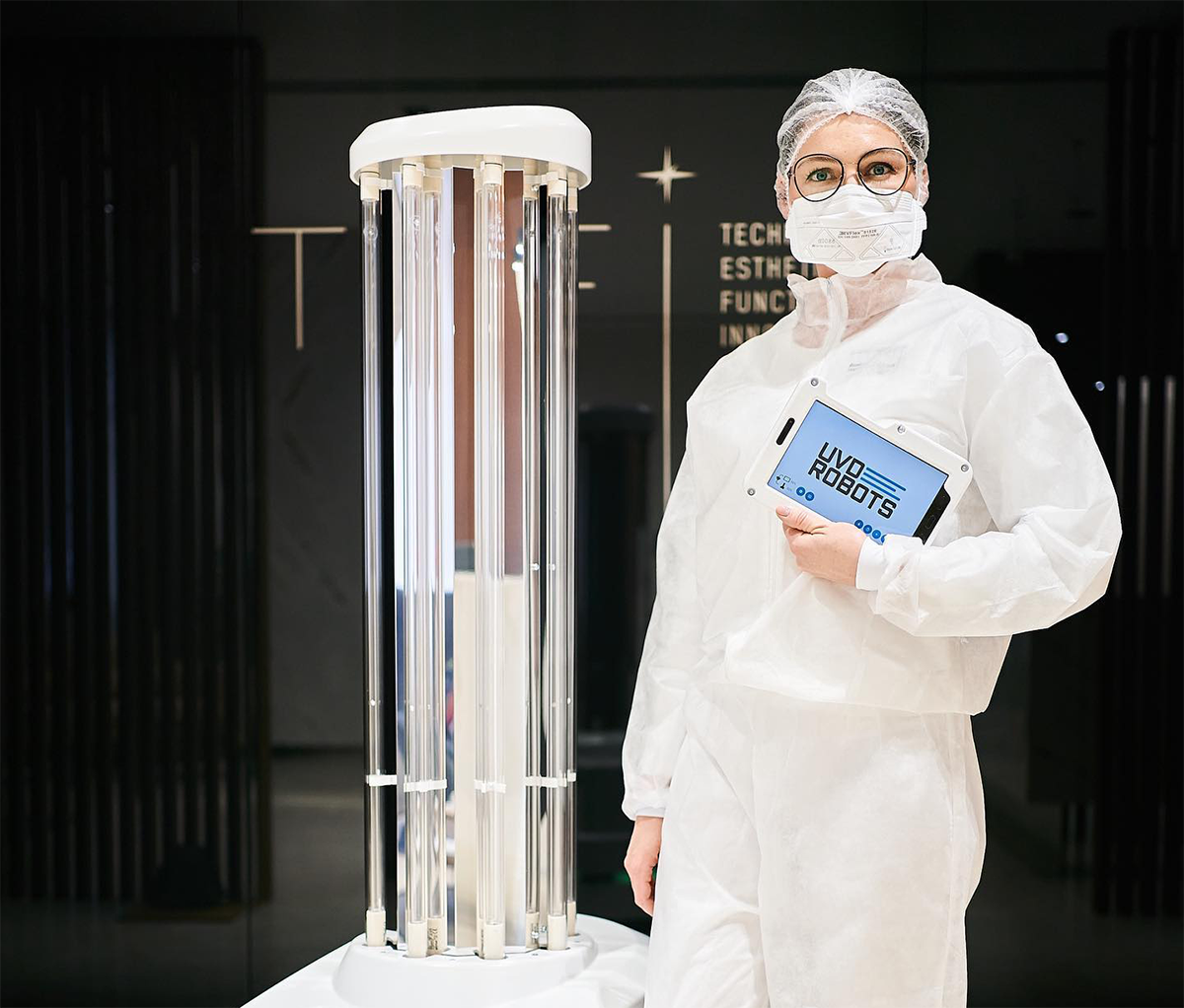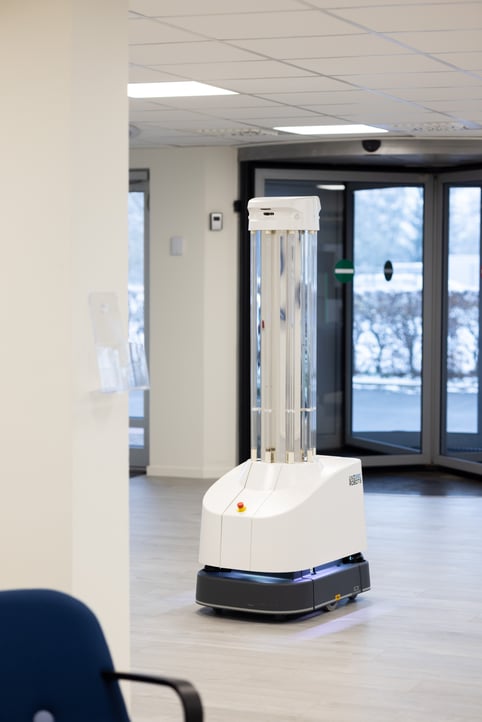Title
Content
Title
Content

Environmental disinfection involves a combination of coordinated cleaning efforts, advanced disinfectants, and the use of new technologies. UV Disinfection robots are one such technology – and here is a closer look at what they are.
Understanding disinfection robots involves understanding robots themselves. A robot may be defined in many ways, but the term robot broadly refers to a machine or system that:
UV Disinfection is the process of deactivating microorganisms from surfaces or objects using Ultraviolet (UV) light. When used in this process, UV light is referred to as Ultraviolet Germicidal Irradiation, or UVGI.6
UVGI exposes objects and surfaces to forms of UV light at certain wavelengths – wavelengths that can deactivate microorganisms. Ultraviolet C, or UV-C light, is a particular range of UV wavelengths used in UVGI.
In laboratory settings, UV-C light emitted at a wavelength of 254 nanometers (nm) has been linked to the inactivation of specific microorganisms.

A UV Disinfection Robot would then be a robot, or an autonomous machine, that uses UV light to deactivate epidemiologically significant microorganisms.
In this sense, a UV Disinfection Robot must be able to sense its environment and move independently of human interaction. In this way it can effectively distribute UV light to different areas, even those areas once obscured by shadows.7
This also means that stationary or static UV machines can not be considered UV Disinfection Robots, as they require someone to lift, push, or otherwise move them.
UVD Robots are a series of UV Disinfection Robots produced by the Danish company Blue Ocean Robotics. They are mobile, self-navigating robots that are able to operate autonomously to disinfect office and other environments using 254 nm UV-C light.
As genuinely autonomous UV Disinfection Robots, UVD Robots are independently mobile. They use sensors to interact and move around their environments – stopping and starting as necessary so UV-C light can reach previously shadowed areas of a room.8 UVD Robots are a robotic platform that is updated with regular software releases to provide improvements to its user interface.
UVD Robots distribute UV-C light at 254 nm and have the potential to reduce microorganisms at efficacy rates of at least 99.99%.
In conclusion, UVD Robots, as autonomous UV disinfection systems, are true robots by definition. Their operating range exceeds that of stationary systems and serves as an effective technology for mobile, self-navigating UV environmental disinfection.
Lorem ipsum dolor sit amet, consectetur adipiscing elit, sed do eiusmod tempor incididunt ut labore et dolore magna aliqua.
1. Mataric, Maja J. The robotics primer. MIT press, 2007.
2. Spectrum, IEEE. “What Is a Robot?” ROBOTS, IEEE Spectrum, 28 May 2020, https://robots.ieee.org/learn/what-is-a-robot/.
3. IFR International Federation of Robotics. “International Federation of Robotics.” IFR International Federation of Robotics, https://ifr.org/standardisation.
4. Nevejans, Nathalie. "European civil law rules in robotics." (2016).
5. Nevejans, Nathalie. "European civil law rules in robotics." (2016).
6. Kowalski, Wladyslaw. Ultraviolet germicidal irradiation handbook: UVGI for air and surface disinfection. Springer science & business media, 2010.
7. Mackenzie, Dana. "Ultraviolet light fights new virus." Engineering (Beijing, China) 6.8 (2020): 851.
8. Cardona, Manuel, et al. "Mobile robots application against covid-19 pandemic." 2020 IEEE ANDESCON. IEEE, 2020.